Economy
J&K’s simmering unemployment
Published
3 years agoon
By
BK Editor
Exacerbated due to the ongoing COVID19 pandemic, unemployment is an ongoing issue in J&K. Meer Nida and Salman Jeelani analyse the causes and consequences of J&K’s simmering unemployment problem.
The COVID19 pandemic has already been through multiple waves globally, and there seems no hope of any light at the end of this dark tunnel anytime sooner. The economic recession due to COVID19 and its subsequent consequences, like loss of livelihoods and rising unemployment, have already affected the mental health of people. Besides, there is uncertainty looming around the globe. However, the problem in the Union Territory of Jammu and Kashmir is more severe considering the prevalent consequences of the pandemic, added with the unattended issues of unemployment in the valley for a very long time. A recent report from the Centre for Monitoring Indian Economy (CMIE) indicates that Jammu and Kashmir has an unemployment rate of 22.2 percent, the highest among all the states and union territories of the country. It is more perturbing to state that the unemployment rate of J&K is much higher than the average national unemployment rate of India, which was at 7.1 percent as per the report.


The soaring unemployment in Kashmir is a serious concern. The pandemic, along with ongoing uncertainty, has severely damaged the prospect of a stable economy. And the rising unemployment puts the final nail in the coffin of economic stability. The job markets have been pushed to the edge, both in the public and private sector, with no fresh opportunities visible. As the valley doesn’t have a vibrant private sector in place, the burden of employment ultimately falls on the public sector, which, unfortunately, it is unable to tackle as the absorption rate is low.
The government and its various departments do not seem, at all, serious about these rising figures. There are not enough or even requisite posts advertised in the government departments, and even, if advertised, they are never worked out effectively – lack of proper schedules and criteria, relapsing of the advertisements as per their whims, corruption, backdoor entries, favouritism etc. are the main loopholes. There seems to be no proper policy in place in the institutions, which is highly detrimental considering the unemployment issue in the valley. Last year, when the Directorate of Employment created a portal for registering unemployed persons, it is disheartening to mention that around three lakh research scholars and postgraduate degree holders enrolled on the website within a few days. Even when the Jammu and Kashmir Service Selection Board (JKSSB) advertised around 8,000 Class-IV posts, more than five lakh aspirants applied for the same. However, it underwent a controversy considering that the aspirants with higher qualifications were not considered for the posts. The burgeoning figure is an indication enough about how sorry the state of affairs concerning employment is in the valley. And then there is this looming question – Where do the ones with higher education go? The low demand and absorption rate is so alarming that people with higher qualifications and professional degrees, in order to support themselves and their families, have to set for menial jobs and meagre salaries. Especially in the minuscule private sector available in the valley, this often results in their exploitation.
Even in the government sector many people work on a daily wage or contractual basis. And the government is head over heels in deep slumber and pays no attention to the demand for regularisation of their services. The government disengaged a number of contractual lecturers in the Education Department from their services, despite having served various institutions for several years together. Now, in their late thirties and about to cross the upper age limit, they are jobless and have nowhere to go except raise their demands for regularisation. Many daily-wage workers in other departments, like Urban Local Bodies, Social Welfare Department, are hoping against the hope for the regularisation of jobs. It is a vivid example of how the government itself became the root cause for the apathy of these youth who are victims of its ‘use and throw’ policy and have to fend for themselves amidst the already prevalent uncertainty.
While the apathetic attitude of the Education Department was in the news for a long time, the government rarely bothered to care. It contends that its policy of absorption of Rehbar-e-Taleem (ReT) and Sarva Shiksha Abhiyan (SSA) teachers leaves no vacancies for fresh recruitments in the teaching department and is likely to continue for upcoming many years. However, this contention is a root issue itself. The teacher-student ratio in many schools and colleges is highly disproportionate. There are many examples where there are too many teachers for very few students and vice-versa, leaving minimum chances for the highly educated youth to render their services as skilled and learned teachers in the Education Department. Often, government schools in the valley show poor results, and there are complaints about inefficient staff and teaching-learning scenarios. Besides, colleges and universities not advertising various teaching posts regularly also become a hindrance for the livelihood of educated youth. One of the reasons behind this is the extension of services of staff members beyond superannuation or enhancing the retirement age from time to time. This tendency heavily weighs over the employment opportunities for many deserving candidates who are highly learned and skilled. Plus, the system of backdoor entries and nepotism has favoured people who, with an approach to government corridors, secure jobs for themselves, thereby rendering many deserving candidates jobless.
Also, every year, thousands of students pass with professional degrees. The moment they get the degree, it is disheartening to mention that they end up shifting their courses according to the job availability around the state. It, in turn, leads to doctors working as administrative officers, engineers working in banks, students of commerce working in a sector where Liberal Arts and Humanities students could have got absorbed. It has led to the dilution of professional skills and talent. But is the youth to be blamed for this intermingling of professions? The answer is a clear-cut NO. When there are no decent job opportunities available, how will the youth fend for themselves in a society which provides them literally no ‘proper’ avenue to exercise their skills?


With the introduction of the All India Quota (AIQ) for securing admissions in prestigious medical colleges of the valley — though deferred for implementation from the next academic year — the students from Jammu and Kashmir will have to compete for securing admissions in prestigious medical colleges of the UT with students across the country. The state quota has five hundred seats for post-graduation in the medical field. Around 3,000 students used to compete for them within the valley itself. With the implementation of AIQ, 50 percent quota from each of the Government Medical Colleges shall be granted to the national pool, and for prestigious deemed institutions like Sher-e-Kashmir Institute of Medical Science (SKIMS), a perfect hundred percent will go to the all-India quota. The work bond of the candidates who get selected outside J&K will be around 8 to 10 years, which if one fails to fulfil could end in a penalty, but for the candidates from across the country who get admitted to the institutions in the valley, there is no such thing as bond in place. The results of this policy shall be dire. Each year, the number of postgraduate aspirants rises due to the lesser seats available for the J&K domiciles, which, in turn, shall be distributed among reserved and unreserved categories, thereby delaying the postgraduate studies, which diminishes prospects of healthy employment.
The same stands the case for various job advertisements. Earlier, the jobs in J&K were reserved for state subjects only. But now, people from across the country may compete for the posts advertised by the public sector departments. This step is another blow to the already poor unemployment scenario in the valley. Moreover, this is an unhealthy and unequal sort of competition as the students and aspirants from the valley already suffer a lot due to shutdowns and uncertain internet clampdowns or speed restrictions, whereas students from across the country do not face these restrictions. This unfair competition will result in the possibility of Kashmiri people lagging behind due to mismanaged policy-making.
The figures of the Jammu and Kashmir Public Service Commission (JKPSC), the recruiting agency behind the Combined Competitive Examination (CCE) show that the number of posts has been decreasing year on year. On the other hand, the government reduced the age bar of the unreserved category aspirants from 37 years to 32 years, leaving the youth high and dry. This criterion was a bolt from the blue for the JKAS aspirants since the CCE, which is already irregularly patterned and conducted after a gap of three years. However, the government did listen to the woes of the aspirants and put the new criterion on hold for the year 2021, giving only a one-time relaxation which was indeed a good step, though most chances are it will get implemented from next year onwards. The minimum age bar and reduced number of posts is another obstacle for the aspirants. Considering the fact that they have to prepare for the UPSC-modelled exam amidst all the political uncertainty and internet restrictions, it is a grave injustice to the youth of the valley. Moreover, some other states in India do have the upper age limit of 37-40 years to appear in their state service exams. J&K Government seems to be whimsical in adopting this separate criterion, which has perturbed the youth and done nothing positive to ease their miseries. Rather than reducing the age bar, the government and the recruiting agency should have looked into how the number of posts could be increased and how the exams could be streamlined and conducted more regularly. Moreover, it should have lent a helping hand to already distressed youth with free coaching and other facilities.
As far as the private sector is concerned, it is almost non-existent in the valley. Industries and corporate sectors are non-existent. While the government expects the private investment will create new jobs in the valley, these promises are yet to show any results on the ground. The existing private sector keeps receiving severe blows due to successive lockdowns, especially since 2019- whether the post-abrogation shutdown or the harsh Covid19 lockdown.
Moreover, the order of awarding mining contracts of sand, stone quarrying, etc., to non-J&K residents has also led a blow to the livelihood of natives. This step has snatched the bread and butter of hundreds of families who priorly relied upon the same. The conversion of forest and agricultural land into industrial estates is another grave issue J&K faces after removing its special status. The demolition drive by the state for the extraction of land for industries has rendered the tribal community without homes and affected their livelihood.
Another initiative by the Government of India to allow the processing of globally acclaimed Kashmir Pashmina in Varanasi town of Uttar Pradesh will also hit the livelihoods in Kashmir and Ladakh. The Khadi and Village Industries Commission (KVIC) has reportedly roped in institutions in the Varanasi town (parliamentary constituency of PM Modi), where raw Pashmina wool will be processed and further weaved into fabric. While the KVIC claims that the step will ensure the availability of genuine and affordable Pashmina wool products, the decision is a cultural shock for local artisans in J&K and Ladakh, who believe, it will affect their livelihood. The cultural imbibition has also impacted the employment of local tailors, designers and boutiques in the valley. Many people are of the view that earlier, the native traditional dress, Pheran (long, warm Kashmir cloak), was manufactured in Kashmir only, but now many fashion designers and outlets across the country are producing it at cheaper rates, which has also resulted in a cultural as well as an economic loss to the valley.
In a nutshell, the economy of Jammu and Kashmir has been suffering since dawn, with unemployment being the major debacle as it concerns the youth of the society, who are the pillars of a sound and stable future. However, on account of rising unemployment despite professional degrees, skill training, and education from top-notch universities in the country and abroad, the youth of Jammu and Kashmir are beset in a terrible crisis. They have no vision for better prospects and better opportunities as the government is far from providing them. It has, in turn, led to a depressed and under-confident youth. The job losses and rising unemployment scenario with no bright prospects consume the Kashmiri youth silently. It is indicated through the abrupt rise in suicide cases of young people during the pandemic. Moreover, a recent study revealed that Jammu Kashmir has about six lakh people involved in drug-related issues, and 90 percent of these drug users are in the age group of 17-33 years. These figures are alarming, and the percentage of youth involved in drugs indicates how distressed they are.
Post the abrogation of Article 370 and conversion of the Jammu and Kashmir State into a Union Territory, the government has been promising development and making claims of a Naya (new) Kashmir which will see betterment in all aspects. When the country’s Home Minister Amit Shah visited J&K in October last year, he said he preferred talking to Kashmiri youth and “extend a hand of friendship” to them and sought their “support and co-operation for peace and development” in Jammu and Kashmir. The Government of India needs to demonstrate what practical steps it has been taking for the youth in the valley, for their betterment, and their role in strengthening infrastructure and bringing about development. It is disheartening to see that rather than pulling the drowning youth from the sea of unemployment, the government has been taking bizarre steps which hamper their claims of positive development in the Union Territory. Instead of fostering plans and policies for the employment generation, the initiatives taken by the government in the name of progress only push the people in general and youth in particular to the brink of unemployment, joblessness and hopelessness. The situation becomes dire as the people have no representatives to represent them at the national or UT level. There is neither the promised statehood nor peoples’ representation in the government, leaving the people with no choice but to tackle the consequences of economic collapse and unemployment themselves. The government of India should show a keen interest in restoring all the rights of people and come up with plans, policies, and strategies, which not only promise development in general and employment in particular, not merely on paper but factually on the ground. Moreover, policies and schemes already implemented need a review with the people for whom these are meant — be it students, job aspirants, businessmen or artisans. An effective administration with keen interest and robust work on the ground is the need of the hour to pull Jammu and Kashmir out of shackles of unemployment to the oceans of peace and prosperity.
Meer Nida is pursuing her Masters in English literature from Jesus and Mary College, University of Delhi, and Salman Jeelani is a final year student of English Honours at Islamic University of Science and Technology, Kashmir
You may like
-




RBI penalises Central Cooperative Banks Baramulla, Anantnag for violations
-




Editorial | J&K Budget 2025-26 – A Balancing Act
-




CII J&K Organizes Health Conclave 2024
-




Kya kuchh tha jiske kehne ko: A tribute to father
-

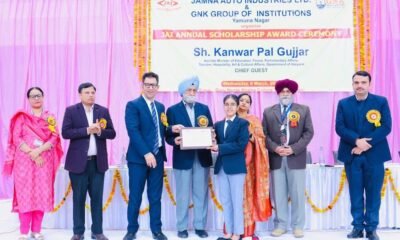


GNK hosts JAI scholarship distribution function
-




Administrative Council approves J&K Startup Policy 2024-27
Economy
Editorial | J&K Budget 2025-26 – A Balancing Act
Published
4 months agoon
March 8, 2025By
BK Editor

Fiscal Constraints Amidst Development Aspirations
J&K Budget 2025-26
Preparing the maiden budget for Jammu and Kashmir as the head of an elected government of a state downgraded to a UT and remaining under central rule without an elected government for more than seven years with overwhelming challenges was an arduous task for Chief Minister Omar Abdullah.
While his speech paints a hopeful picture of a “new and prosperous” J&K, a closer look reveals a delicate balancing act necessitated by fiscal realities and the people’s aspirations: high hopes with vivid memories of recent election promises.
As Omar Abdullah seeks to lay the foundation for ‘long-term growth, stability, and self-reliance’ of J&K, he has to walk a tightrope to keep the state’s mounting debt under control. However, his prudent management to keep the fiscal deficit under leash has come at a cost: a leaner budget. This year’s budget allocation of Rs 1.12 lakh crore is Rs 6080 crore or 5% less than last year’s budget announcement of Rs 1.18 lakh crore. The reduction in budget allocation, along with 4-5% inflation, raises concerns about the government’s ability to realise its ambitious development goals fully.
The CM’s speech, though, outlines a comprehensive vision, touching upon crucial sectors like rural development, agriculture, tourism, and industry. But translating these aspirations into tangible outcomes requires substantial financial investment. Moreover, the pervasive challenge of inflation adds another layer of complexity. Rising prices erode purchasing power, making it harder to stretch limited budgetary resources.
As Omar Abdullah seeks to lay the foundation for ‘long-term growth, stability, and self-reliance’ of J&K, he has to walk a tightrope to keep the state’s mounting debt under control. However, his prudent management to keep the fiscal deficit under leash has come at a cost: a leaner budget. This year’s budget allocation of Rs 1.12 lakh crore is Rs 6080 crore or 5% less than last year’s budget announcement of Rs 1.18 lakh crore.
The emphasis on fiscal prudence, curbing non-priority spending, and enhancing revenue collection is understandable, given J&K’s historical fiscal stress. However, austerity measures must be carefully calibrated to avoid stifling economic growth and hindering essential public services, especially when inflation is already squeezing household budgets.
The budget’s focus on digital governance and healthcare accessibility is welcome. Initiatives like the SEHAT app and the expansion of digital services have the potential to improve efficiency and transparency. Yet, the question remains: are the allocated funds sufficient to ensure the effective implementation of these programs, particularly when the real cost of implementation is escalating due to inflation?
The agricultural sector, a cornerstone of J&K’s economy, receives significant attention. The success of the Holistic Agriculture Development Program (HADP) will be crucial in boosting farmer incomes and creating employment opportunities. The allocation to HADP has been reduced Rs 800 crore from last year’s 1000 crore plus. However, the program’s impact will depend on the timely disbursement of funds and effective implementation, and whether the farmers can see real increases in their income, that outpace the rising cost of goods.
Similarly, the ambitious plans for tourism development require substantial investment in infrastructure and marketing. While the government’s efforts to promote offbeat destinations and sustainable tourism are laudable, the sector’s growth will depend on attracting private investment and addressing critical challenges like sustainability and waste management, while also dealing with rising operational costs due to inflation.
Some headline-making announcements like free rides for women in public transport and 200 free units of solarised power for AAY population fail to impress the general public. The argument is J&K has almost non-existent public transport. About 850 public buses with a passenger capacity of 35,000 people do not even suffice the transport needs of the 1% of the 1.2 crore population of J&K. The 200 e-buses for two metro capital cities, announced in last year’s budget, failed to take route. CM has repeated the announcement this year.
The government’s commitment to empowering MSMEs and startups is also noteworthy. However, ensuring access to finance and creating a conducive business environment will be essential for fostering entrepreneurship, and this becomes more difficult when inflation creates financial uncertainty. In last year’s budget, a good amount was announced under Youth Startup and Seed Capital Schemes but both schemes failed to take off.
Also, the budget is unable to address the burgeoning unemployment that, as per some private surveys, has reached 32%.
Whatever the allocations, the success of this budget will be now judged by its ability to deliver tangible benefits to the people of J&K. While the government’s efforts to reduce the fiscal deficit are commendable, it must also prioritize investments that will drive economic growth, create jobs, and improve the quality of life for all citizens, while also mitigating the effects of inflation.
The challenge lies in navigating fiscal constraints and inflationary pressures while maintaining momentum on the development path. This budget sets the stage for a critical year ahead, one that will test the Omar Abdullah government’s ability to balance its books and deliver on its promises, in a climate of rising prices.
Economy
SKUAST-K to hold mega Science Summit on Aug 23-24
Published
11 months agoon
August 21, 2024By
BK Editor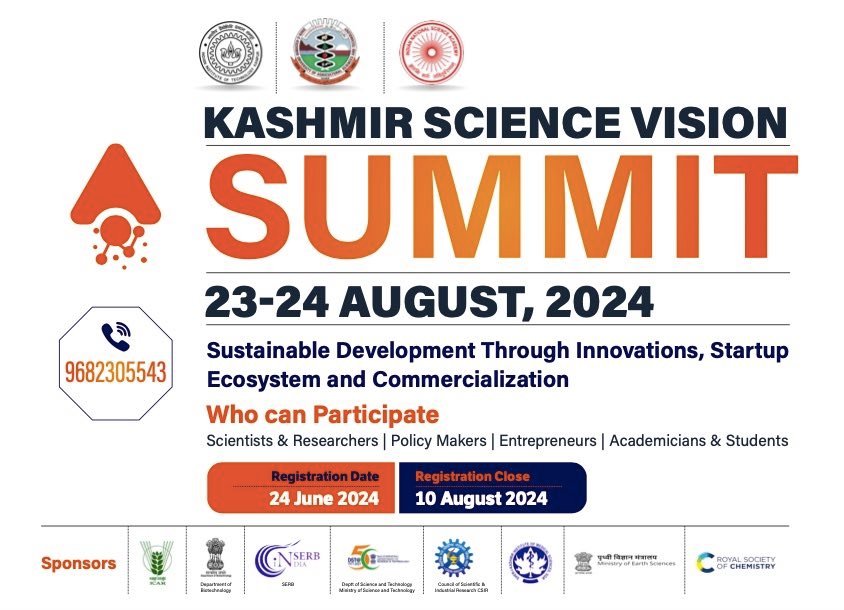

Srinagar, Aug 21: Sher-e-Kashmir University of Agricultural Sciences and Technology of Kashmir is hosting a mega first-of-its-kind science summit ‘Kashmir Science Vision-2024’ on August 23-24 at Shalimar campus. The event is expected to bring together leading scientists, researchers, policymakers, entrepreneurs and scholars to discuss and develop science and technology policy for the sustainable future of Jammu and Kashmir with a focus on helping the UT to emerge as a model for Viksit Bharat@2047.
The Kashmir Science Vision Summit will feature a dynamic range of keynote lectures, panel discussions and brainstorming sessions.
These discussions will focus on key areas of regional development like Scientific Innovations & Entrepreneurial Opportunities for exploring how technology can be harnessed to drive socio-economic growth and create new business opportunities, Biomedical & New-Age Sciences for advancing healthcare through innovative medical sciences and improving health outcomes for the region’s residents. Food Security & Sustainability for promoting sustainable agricultural practices to ensure long-term food security and environmental health, Biodiversity Conservation & Disaster Management for developing strategies to protect the region’s unique ecosystems and mitigate the impact of natural disasters will also feature in the two-day summit.
The summit aims to foster collaboration among diverse stakeholders to ensure that scientific advancements translate into meaningful benefits for Jammu and Kashmir.
Vice Chancellor SKUAST-K Prof Nazir Ahmad Ganai said the summit will serve as a catalyst for the region’s sustainable development and strategic growth. “It will be remembered as the spark that ignited science and technology-led future-ready Jammu & Kashmir,” he added.
Pertinent to mention, SKUAST-K is a premier institution dedicated to advancing agricultural sciences and technology. With a commitment to innovation and excellence, the university plays a pivotal role in fostering sustainable development and technological progress in the region.
Trade
Lenskart enters Kashmir market, opens shop at Regal Chowk
Published
1 year agoon
January 27, 2024By
BK Editor

Srinagar: Lenskart, India’s leading eyewear brand, has forayed into the Kashmir valley with the opening of its first outlet at Regal Chowk in Srinagar city. This expansion marks a significant milestone for Lenskart as it continues its mission to provide vision correction solutions to every individual across the country and beyond.


With seven successful stores already established in J&K UT’s Jammu city and plans underway for another outlet in Sanat Nagar, Srinagar, Lenskart aims to extend its presence to every nook and corner of Srinagar city.
“We have plans to expand our reach into other districts of Kashmir soon, ensuring accessibility to quality eyewear products and services for all residents,” said Dr Mohammad Mutaher Zerger, who heads Lenskart’s Portfolio and Franchisee Business Divisions.
Dr Mutaher is a seasoned professional with extensive experience in franchise management. Having previously served at McDonald’s, the new head of franchise at Lenskart brings valuable expertise in expansion strategies and operational excellence. “We are dedicated to providing state-of-the-art sophistication in eyewear technology, coupled with unparalleled customer service,” he added.
Lenskart’s commitment to accessibility and affordability is reflected in its offerings, including the innovative Buy One Get One (BOGO) facility available at all Lenskart outlets and online. Additionally, the brand provides complimentary eye testing facilities, ensuring that customers receive comprehensive care tailored to their needs.


Lenskart Founder, Shark Piyush Bansal’s Vision is to give correction-less vision to the entire India.
In line with its dedication to innovation and excellence, Lenskart recently inaugurated a cutting-edge robotic factory in Bhiwandi, where lens production and fittings are carried out with precision and efficiency. This advanced facility underscores Lenskart’s commitment to leveraging technology to deliver superior-quality products to its customers.


With a network of 1800 stores across India and a growing presence in international markets such as Singapore, Saudi Arabia, Thailand, and the UAE, Lenskart is poised for further expansion into other countries in the Middle East and Asia-Pacific regions.
Lenskart’s entry into Kashmir signifies not only its commitment to providing vision correction solutions but also its dedication to empowering individuals with the gift of clear vision, enabling them to lead more fulfilling lives.


RBI penalises Central Cooperative Banks Baramulla, Anantnag for violations


Editorial | J&K Budget 2025-26 – A Balancing Act


Building FPO Leaders: SKUAST-K, MANAGE Hyderabad complete trainers’ training


CII J&K Organizes Health Conclave 2024


SKUAST-K to hold mega Science Summit on Aug 23-24


Haryana Biodiversity Board commemorates International Biodiversity Day at GNK Group Of Institutions


Kya kuchh tha jiske kehne ko: A tribute to father


GNK hosts JAI scholarship distribution function


Administrative Council approves J&K Startup Policy 2024-27


How to begin investing
Trending
-

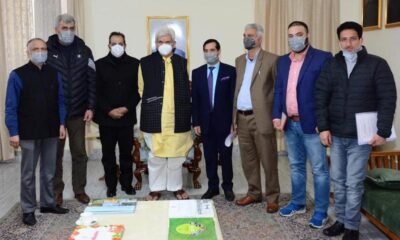

 Industry4 years ago
Industry4 years agoFCIK hails LG Sinha for creating entrepreneur-friendly industrial ecosystem
-



 Economy2 years ago
Economy2 years agoGlobal eCommerce boom and local traders of Kashmir
-

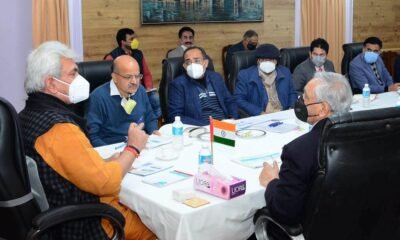

 Energy4 years ago
Energy4 years agoLt Governor discusses J&K power scenario with experts
-

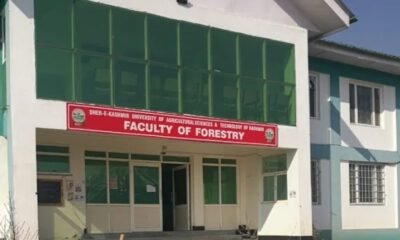

 Infra4 years ago
Infra4 years agoSKUAST-K bags EU project for urban green infrastructure
-

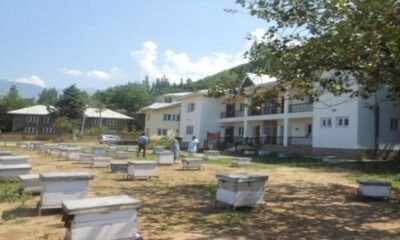

 AgriBiz4 years ago
AgriBiz4 years agoSKUAST-K to set up 3 honey testing labs in Kashmir
-

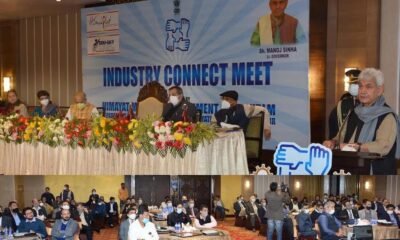

 Jobs5 years ago
Jobs5 years agoJ&K Govt holds Industry Connect Meet-Himayat 2020
-



 Careers5 years ago
Careers5 years agoSKUAST-K holds career counselling at Wadura campus
-



 Industry5 years ago
Industry5 years agoImran Murtaza takes oath as president Industrial Association Khunmoh

